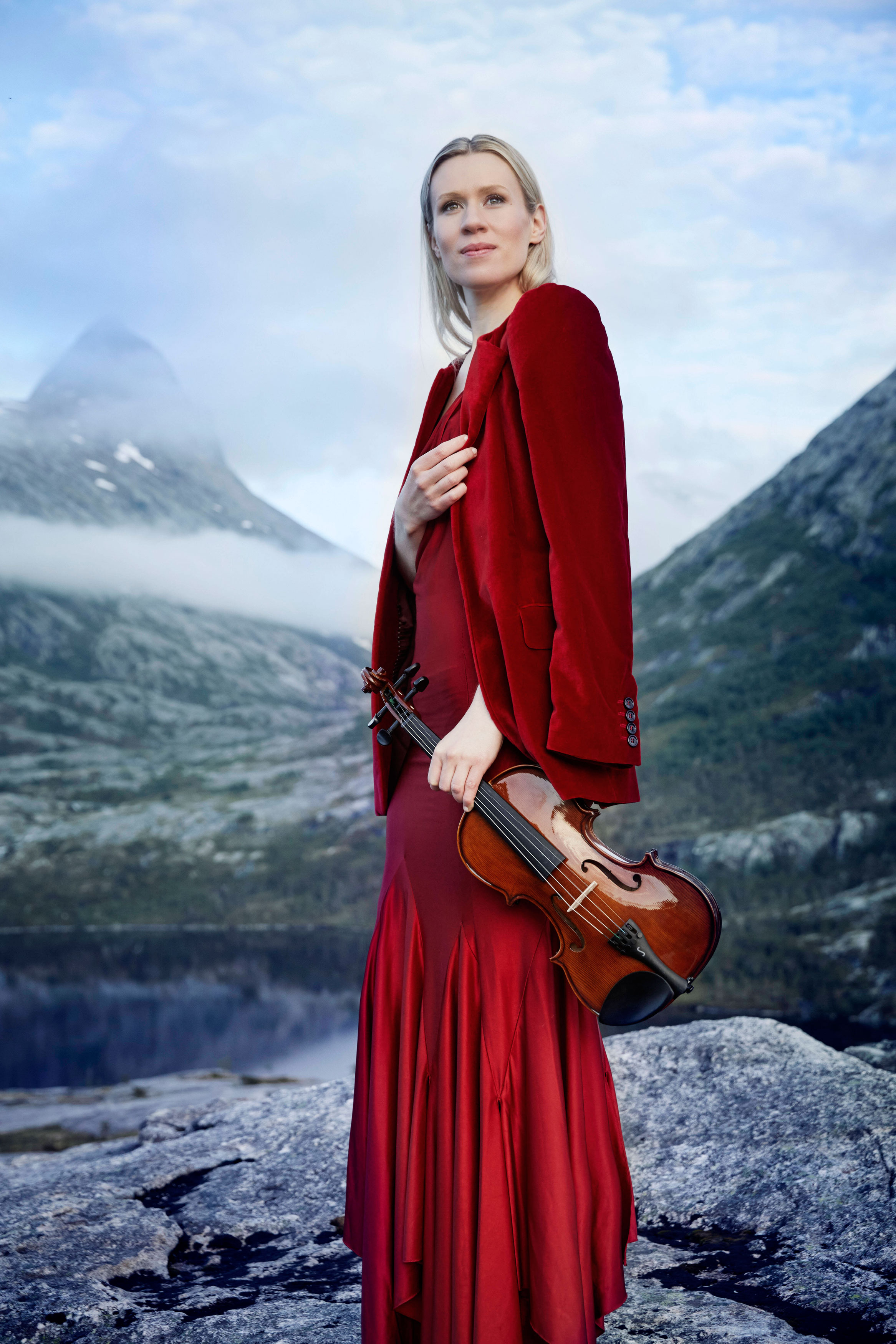An esteemed music critic once said to me: “Well we can’t just go on listening to the same old pieces all the time”. Well I can, happily – especially when they’re brought off as sparkily as Santtu-Matias Rouvali did in this concert.
He had me on the edge of my seat from the dramatic opening chords of Egmont (1810) which arrived with more incisive bite than I’ve heard in a long time. There was real excitement after the general pause too as Santtu drove the orchestra down the final page with all those wonderful brass arpeggios and piccolo glissandi. It was an arresting start to an all-19th century concert.
The filling in the Beethoven sandwich was Bruch’s first violin concerto (1869) played by Eldbjorg Hemsing who tall, blonde and wearing a beautiful emabossed silk gown in taupe looked as striking as she sounded. I loved the quiet drama she brought to the arrival at the glorious, Classic-FM favourite, adagio. It never palls and she made it sound exquisitely melodious, forcing one to listen as if one had never heard it before. Then came the gentle segue into finale in which her virtuosic double stopping (energico indeed) was nicely counterpointed with the languid grandiloquence of the orchestra’s main theme. It’s good to be able to see and hear, in live performance, the fine timpani work (Antoine Sigure) required in this piece because it is often almost lost in recordings. It’s also a treat to watch a soloist who is such an integrated part of the music that she can’t help quasi-conducting – dancing almost – during the orchestral sections.
The final work was Beethoven’s second symphony (1803). Santtu chose to take the opening movement at a tempo nippy enough to sound crisp but measured enough to allow the detail to cut through. And the balance between winds and strings was sensitively managed. I have never before, incidentally, seen a conductor try to stop the applause at the end of a movement. It’s fashionable not to mind it. But Santtu clearly does and I’m unfashionably in his camp.
The tenderly elegant larghetto felt like chamber music with lots of leaning and looking between front desks and Santtu’s take on the scherzo was an appealingly delicate contrast.
The whole symphony is smiley music, written in the year in which Beethoven, devastatingly, had to accept that his hearing really was going. How on earth did he find the strength to write this cheerful symphony? I beamed throughout but particularly in the concluding Allegro Molto: Beethoven as his most insouciant and full of joie de vivre. Santtu gave us a cheeky account of it – clearly enjoying the jokey exuberant fun with, for example, exaggerated dynamic contrasts. It wouldn’t, perhaps, be everyone’s cup of tea but I felt I was watching a man communicating directly with the composer and at one with every player in his orchestra.
Susan Elkin

